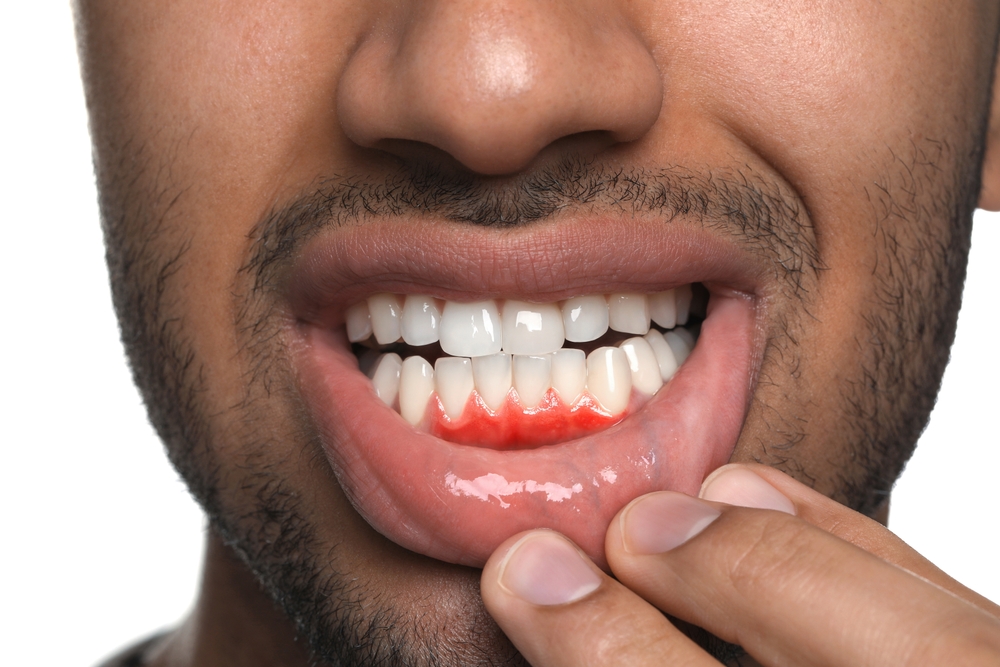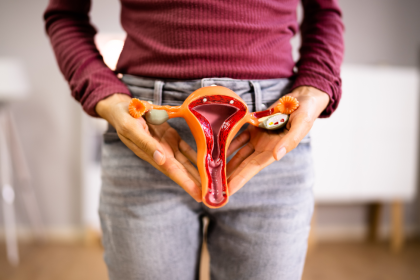Gum disease affects a substantial portion of the adult population, with recent studies indicating that nearly half of Americans over 30 experience some form of this condition. While many recognize bleeding gums as a warning sign, fewer understand the critical distinctions between early-stage gingivitis and its more destructive counterpart, periodontitis. These differences determine treatment approaches, long-term outcomes, and potential impacts on overall health.
The progressive nature of gum inflammation
Gingivitis represents the initial stage of gum disease, characterized by inflammation without permanent damage to supporting structures. This condition develops when bacterial plaque accumulates along the gumline, releasing toxins that irritate delicate gum tissues.
The body responds to this bacterial presence with increased blood flow to the area, causing the characteristic redness and swelling. While uncomfortable, gingivitis remains completely reversible with proper dental care and improved oral hygiene practices. Studies show that approximately 80% of gingivitis cases respond successfully to professional cleaning combined with enhanced home care routines.
Most patients first notice gingivitis through bleeding during brushing or flossing, though some may observe visual changes like redness or puffiness along the gumline. Without intervention, this inflammation can progress to periodontitis in susceptible individuals, particularly those with risk factors like smoking or diabetes.
The destructive advancement to periodontitis
Periodontitis marks the progression beyond simple inflammation to permanent damage of supporting structures. As bacteria advance beneath the gumline, they create pockets between teeth and gums where more pathogens multiply, protected from normal cleaning methods.
This bacterial invasion triggers an immune response that unfortunately damages not only the invading bacteria but also the surrounding periodontal ligaments and supporting bone. This destruction creates a cycle where deeper pockets form, allowing bacteria to advance further and causing additional tissue breakdown.
The American Academy of Periodontology reports that approximately 42% of adults aged 30 and older suffer from periodontitis, with about 7.8% experiencing severe forms of the disease. Unlike gingivitis, periodontitis causes irreversible damage that can ultimately lead to tooth loss if left untreated.
6 critical symptoms distinguishing the conditions
The first major difference appears in gum bleeding patterns. While gingivitis typically causes bleeding only during brushing or flossing, periodontitis patients often experience spontaneous bleeding or bleeding with minimal pressure. This increased bleeding tendency reflects the more severe inflammation and vascular changes in the affected tissues.
Second, tooth stability remains normal in gingivitis but becomes compromised in periodontitis. As supporting bone diminishes, teeth may begin shifting position or feeling loose when pressure is applied. This mobility represents one of the most concerning signs of advanced disease and indicates significant structural damage has occurred.
Third, gum recession develops only in periodontitis cases. The inflammatory process and subsequent tissue destruction cause the gumline to pull away from teeth, exposing sensitive root surfaces. This recession not only creates aesthetic concerns but also increases vulnerability to root decay and temperature sensitivity.
Fourth, pain levels differ significantly between conditions. Gingivitis typically causes minimal discomfort beyond mild tenderness, while periodontitis can produce genuine pain, particularly during chewing. This discomfort stems from the inflammation extending deeper into supporting tissues and potentially affecting nearby nerve endings.
Fifth, breath odor intensity increases dramatically with periodontitis. While gingivitis can cause bad breath, the deeper bacterial invasion of periodontitis produces more powerful and persistent odor. This malodor results from volatile sulfur compounds released by anaerobic bacteria thriving in periodontal pockets.
Sixth, systemic health connections become more pronounced with periodontitis. Research has established stronger associations between periodontitis and conditions like diabetes, heart disease, and stroke than with gingivitis alone. These connections likely result from inflammatory mediators entering the bloodstream through damaged blood vessels in diseased periodontal tissues.
Risk factors that accelerate disease progression
Tobacco use stands as perhaps the most significant modifiable risk factor for developing periodontitis. Smokers face up to six times higher risk of progressing from gingivitis to periodontitis compared to non-smokers. The chemicals in tobacco products impair immune function and reduce blood flow to gum tissues, limiting healing capacity and masking early warning signs like bleeding.
Diabetes significantly influences gum disease development and progression. People with poorly controlled diabetes experience more severe periodontitis and faster tissue destruction. This relationship works bidirectionally, with periodontitis also making blood glucose control more difficult, creating a dangerous cycle of worsening conditions.
Genetic susceptibility plays a substantial role in determining who develops periodontitis. Research indicates that genetic factors may account for up to 50% of periodontitis risk, explaining why some individuals with seemingly good oral hygiene still develop the condition while others with poorer habits remain relatively unaffected.
Stress impacts periodontal health through multiple mechanisms. Chronic stress elevates cortisol levels, suppressing immune function and allowing bacterial overgrowth. Additionally, stressed individuals often neglect oral hygiene routines or adopt harmful habits like teeth grinding that compound periodontal damage.
Certain medications contribute to gum disease risk by causing reduced saliva flow or gum overgrowth. Anticonvulsants, immunosuppressants, some calcium channel blockers, and certain antidepressants can create conditions favorable for bacterial accumulation or alter gum tissue responses to plaque.
Effective prevention strategies protect against both conditions
Professional dental cleaning remains the cornerstone of prevention, removing hardened tartar that harbors bacteria and cannot be eliminated through home care alone. Dental hygienists use specialized instruments to clean both above and below the gumline, disrupting bacterial colonies before they cause serious inflammation.
Studies show that patients who maintain regular six-month cleaning schedules have significantly lower rates of both gingivitis and periodontitis compared to those who visit dentists sporadically. These preventive appointments also allow professionals to identify early warning signs before significant damage occurs.
Daily oral hygiene practices with proper technique provide the foundation for gum disease prevention. Using a soft-bristled toothbrush with gentle pressure helps remove plaque without damaging delicate gum tissues. Electric toothbrushes have demonstrated superior plaque removal in multiple clinical studies, reducing gingivitis by an average of 11% more than manual brushing alone.
Interdental cleaning through flossing or interdental brushes reaches approximately 40% of tooth surfaces that brushing alone cannot effectively clean. Research shows that consistent interdental cleaning reduces bleeding sites by approximately 38% within two weeks when performed correctly.
Antimicrobial mouth rinses containing ingredients like chlorhexidine or essential oils provide additional protection against bacterial accumulation. These products can reduce plaque formation by up to 26% and gingivitis by approximately 25% when used consistently as supplements to mechanical cleaning methods.
Dietary choices significantly impact periodontal health through effects on inflammation and immune function. Diets rich in antioxidants from fruits and vegetables help combat oxidative stress in periodontal tissues, while excessive refined carbohydrates promote bacterial growth and inflammatory responses.
When professional intervention becomes necessary
Persistent bleeding despite improved home care warrants dental evaluation. While occasional bleeding may occur during initial stages of enhanced oral hygiene, continued bleeding after two weeks of consistent care indicates potential periodontitis requiring professional assessment.
Receding gums never represent normal aging and always require professional evaluation. The progressive exposure of tooth roots through gum recession indicates underlying inflammation and tissue destruction characteristic of periodontitis rather than gingivitis.
Tooth mobility represents an urgent warning sign requiring immediate dental care. When teeth become noticeably loose or shift position, significant bone loss has already occurred. Without prompt intervention, these teeth face high risk of eventual loss despite treatment efforts.
Pain while chewing indicates advanced disease affecting supporting structures. While early gingivitis rarely causes genuine pain, persistent discomfort during normal function suggests periodontitis has progressed to affecting deeper tissues with nerve innervation.
Visible pus formation along the gumline indicates active infection requiring prompt treatment. These collections of inflammatory cells signal the body’s attempt to fight bacterial invasion and represent a more serious condition than simple gingivitis.
With proper understanding of these critical differences between gingivitis and periodontitis, patients gain the knowledge necessary to protect their oral health. The encouraging news remains that with regular professional care, consistent home hygiene practices, and attention to early warning signs, most individuals can maintain healthy gums throughout life, avoiding the serious consequences associated with advanced periodontal disease.















